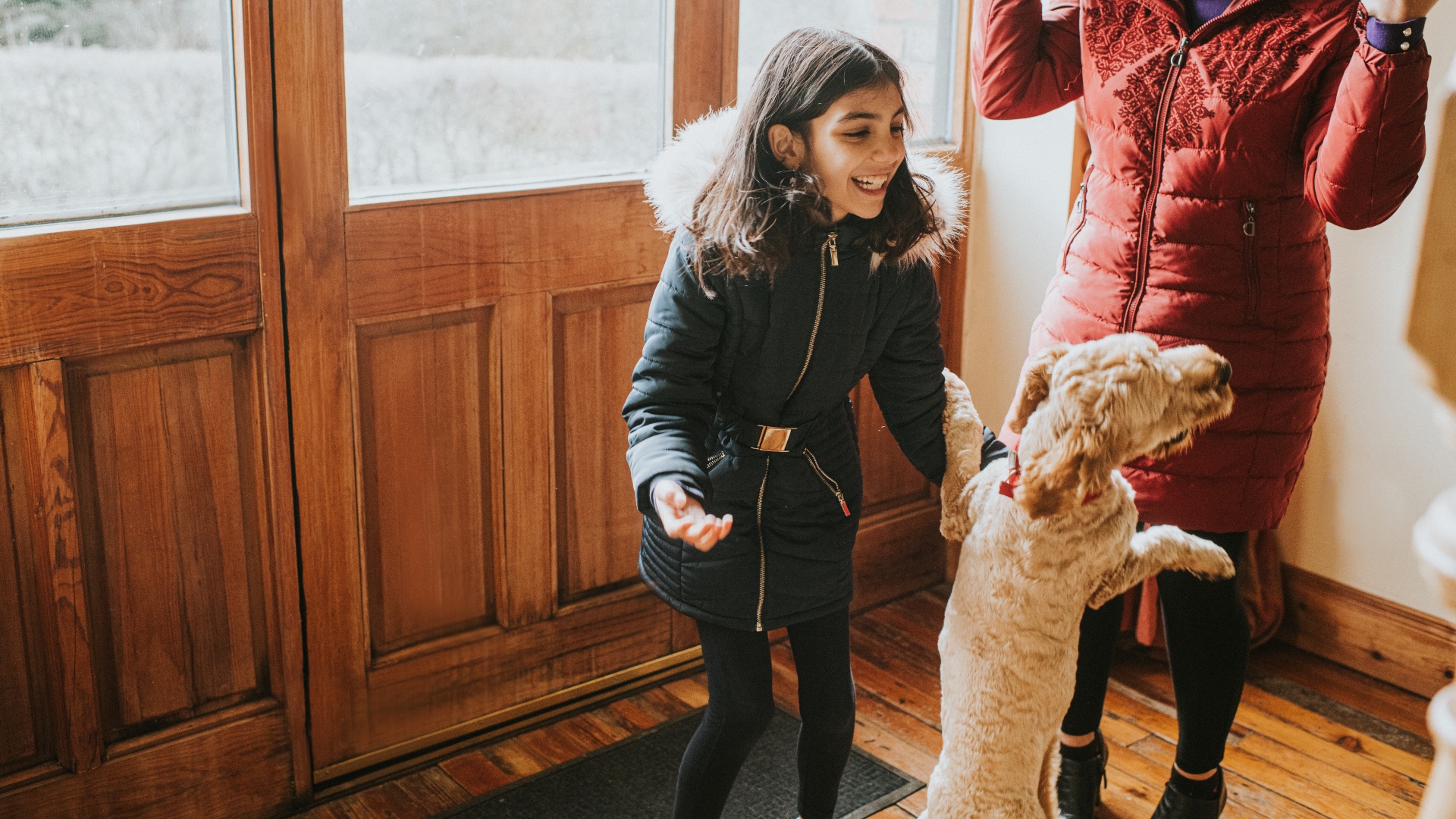
Sometimes, you might not mind your dog jumping up at you while you’re sitting down, but other times you might find it frustrating. Meanwhile, if your dog jumps up at someone else – perhaps a friend or relative who’s more frail – it could even be dangerous.
But if you’ve got a dog who likes to jump up at people, whether they're holding some of the best dog treats or not, you might find it difficult to train them not to do it.
So, how can you get your pup out of the habit?
Juliana DeWillems, owner and head trainer at JW Dog Training, has offered up some advice in a recent Instagram post, and it’s certainly given us some valuable food for thought.
In essence, DeWillems explains that you need to teach your dog what to do, not just what not to do. You want to know how to stop a dog from jumping up, but what desirable behavior do you want from your pup instead?
“We’ll reward standing, sitting, lying down, leaning into us. Pretty much any behavior that isn’t jumping,” she explains. “We reward these behaviors with both petting and food, depending on what helps the dog be most successful.”
DeWillems continues in the caption, “Management can be particularly important while working on this as well, meaning using leashes or physical barriers to prevent your dog from jumping on someone – especially if the stakes are high (like the toddler or grandma) and the training isn’t where you want it yet.”
In other words, safety should come first, particularly if you’re worried about your dog jumping up at someone who might be more vulnerable.
This is something you may want to work on specifically in training sessions, but then you can begin to apply it in your day-to-day life, too. Try to notice when your dog is offering the more desirable behaviors rather than jumping, and be sure to give your dog plenty of attention.
DeWillems also stresses that whether or not to control your dog’s jumping comes down to personal preference. If you and others in your household don’t mind your dog jumping at you when you’re sitting down, there’s no need for you to prioritize it in your training.
However, if it is something you’d like to tackle, following DeWillems' advice will allow you to do so.







